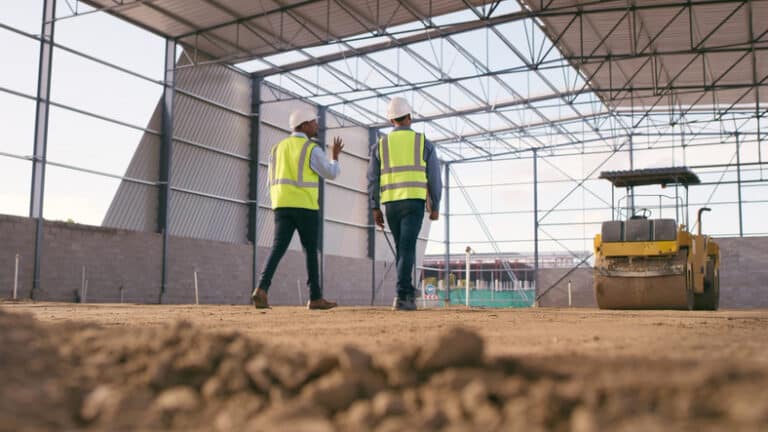The AEC sector (Architecture, Engineering, and Construction) is notorious for high costs, cost overruns, and slow deliverables. This has been caused by a lack of efficient collaboration between the various parties involved in a construction project—owners, architects, designers, contractors, engineers, facility managers, etc. Building Information Modeling (BIM) is used by construction and design companies to overcome these problems.
- A NIST study identified lack of interoperability as causing an additional cost to building owners of at least $15.8B annually.
BIM is an advanced technology consisting of intelligent components that, when changed, stay updated throughout the design. BIM is a 3D tool that furnishes users with a digital depiction of a facility’s physical and operative characteristics. BIM enables greater insight into a project’s planning, design, construction, and management. It can also function as a shared knowledge resource that can impact decisions that need to be made during a building’s life cycle.
What Can Building Information Modeling Do?
In today’s high-tech world, BIM is not just a tool that’s nice to have. The United Nations estimates that by 2050 the world’s population will be 9.8 billion people. To meet increasing worldwide building demand, the global AEC industry needs to provide much smarter construction solutions.
To this end, an increasing number of governments are mandating the use of BIM for public contracts, and an ever-increasing number of construction and design companies are recognizing the importance of this technology. The following describes four major things BIM can do.
1. Determine Project Specifications
With BIM, spec modeling can be used to write, publish, and manage a project specification. All relevant documentation from various data sources and personnel can be imported. This increases collaboration and results in a more consolidated and accurate view of the complete project spec. In addition, structured templates can ensure compliance with previously determined specifications and corporate styles.
2. Fully Understand Site and Design Possibilities
With respect to a site’s existing conditions and environment, much can go unnoticed without visualization. BIM’s point clouds, digital photography, and visualization capabilities can provide a better understanding of existing features and surrounding structures. This data can also be used to further innovate and/or identify any shortcomings of the existing design.
3. Easily Manage Data
BIM comes with pre-configured data templates and a customizable data structure to ensure that project requirements are met and effective analysis is conducted. Up-to-date data and documentation can be shared with all relevant personnel to optimize timely construction services and streamline facility operations.
4. Provide Access to Comprehensive Building Design and Analysis Information
Execution of design is more easily achieved when everyone involved works in a single shared environment. Integrated information and analysis lead to better design, engineering, and asset performance predictions.
BIM’s design modeling views and hyperlinks enable drawings that are up-to-date and accurately represent the design. In addition, the right people have all the engineering calculations, equipment documentation, and other support they need to build and operate.
What Are the Benefits of Using Building Information Modeling?
The benefits of using BIM include the following.
1. More Efficient Project Delivery
Using BMI, production drawings and databases for manufacturing purposes can easily be generated. This enables increased usage of prefabrication and modular construction technology, thus diminishing waste, reducing material and labor costs, and helping to avoid common issues such as…
- Poor coordination: BIM allows for coordination between contractors, designers, architects, and other relevant personnel.
- Collisions: With BIM, internal or external conflicts can be more easily detected before construction begins. This reduces delays, last-minute changes, and the amount of rework required.
2. Better Management of Design Information
BMI allows for planning and visualizing an upcoming project before construction begins. This is accomplished by the use of 3D visualizations and space usage simulations. All relevant parties can experience a space during preconstruction, thereby reducing delays, construction schedule setbacks, and changes further down the line.
BIM’s database-first modeling enables designers, construction teams, engineers, and architects to access and edit relevant building information using graphical formats they are familiar with, all within one dataset. This allows for a simplified editing process and does away with inconsistencies that inevitably happen when everyone only looks at their own discrete files.
3. Improved Scheduling
Using BMI, AEC organizations can streamline design and documentation processes and quickly update them based on new information, changes, or different site conditions. This facilitates better planning and communication schedules and can drastically reduce or eliminate construction schedule setbacks, allowing for on-time or early project completion.
4. Clarity Among All Involved Parties
BMI enables better coordination, analysis, data management, and visualization between all relevant parties. Teams can easily share information and coordinate and plan accordingly. Additionally, the cloud capabilities of BIM allow users to update information in real-time no matter where they are. This means that drawings and models can be viewed not just on-site but also on mobile devices, thus ensuring up-to-date access to project information at any time.
5. Enhanced Ability to Retrofit and Renovate
Because of improved collaboration between internal personnel and external contractors and more access to relevant data, BIM enables experienced team members to work with builders, thus providing greater control and improved design execution. In addition, visualizations allow for enhanced aesthetics and the best construction decisions, thereby improving initial construction and allowing for better renovations and retrofits.
6. Reduced Cost and Mitigated Risk
With BMI, costs can be reduced as follows:
- Lower tender risk premiums
- Decreased insurance costs
- Fewer design variations
- Fewer opportunities for claims
- Less wasted and unused materials
- Reduction in labor costs
- More up-to-date information
7. Safer Construction Sites
BIM can also help identify potential hazards and enable the planning of on-site logistics before construction begins. In addition, BIM provides visual risk analysis and safety evaluations, thus helping to avoid physical risks and ensure safety for all personnel throughout a project’s execution.
8. Increased Return on Investment (ROI)
Use of BMI allows for the avoidance of many AEC costs, including the following.
- Interoperability costs, including the cost of manual data entry and data duplication.
- Delay costs resulting from idled employees.
- Operating and maintenance costs caused by lowered staff productivity and the need for information verification.
Understanding Koehn Construction’s Design-Build Approach
Koehn Construction understands the importance of BIM to ensure the efficient and collaborative planning, design, and construction of buildings. We specialize in the design-build construction method, which means we handle an entire construction project from start to finish—from the initial design phase all the way to the finishing touches.We approach every project with passion and integrity, and we can’t wait to get started! Please contact us to learn more about how we can help you with your construction project.


